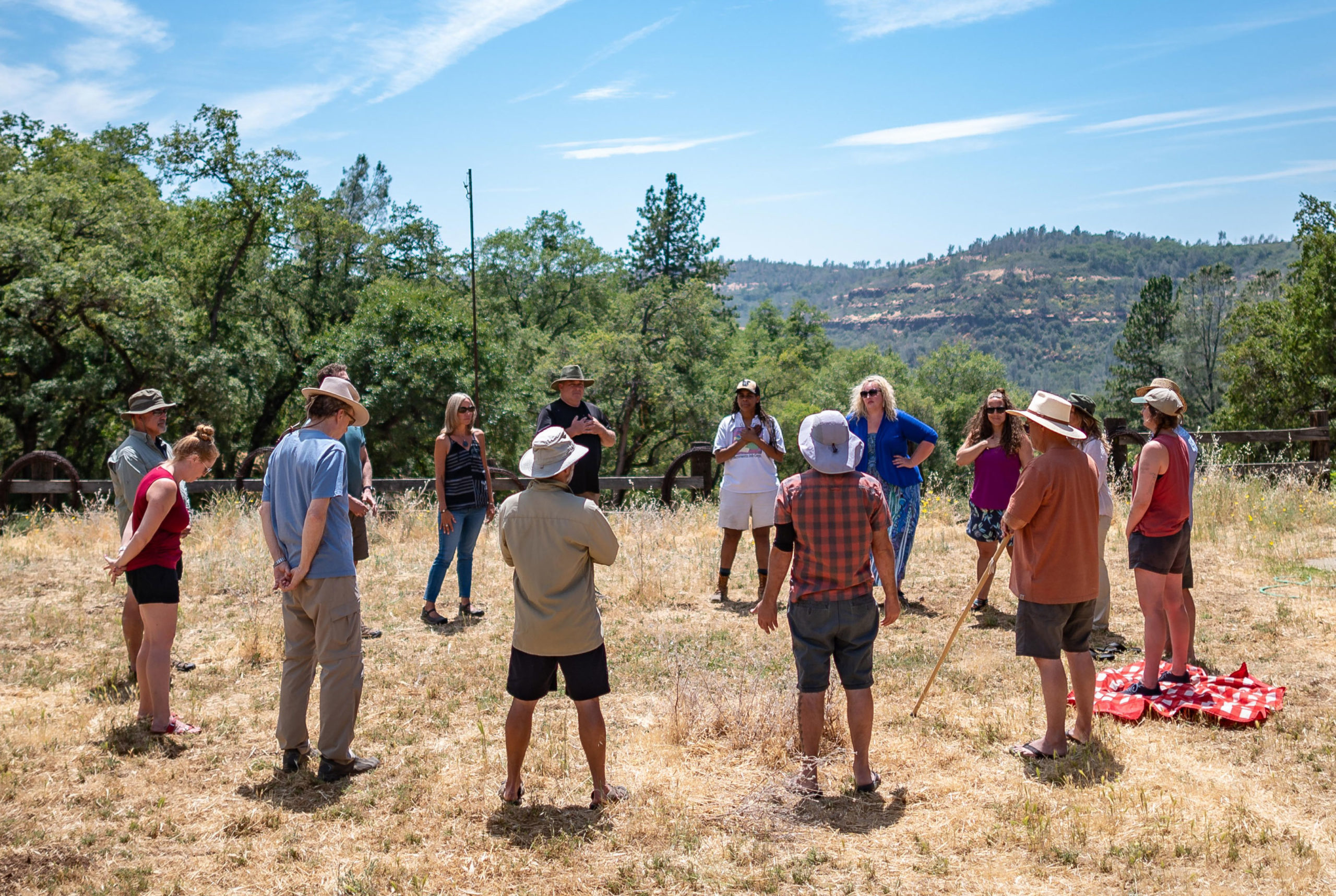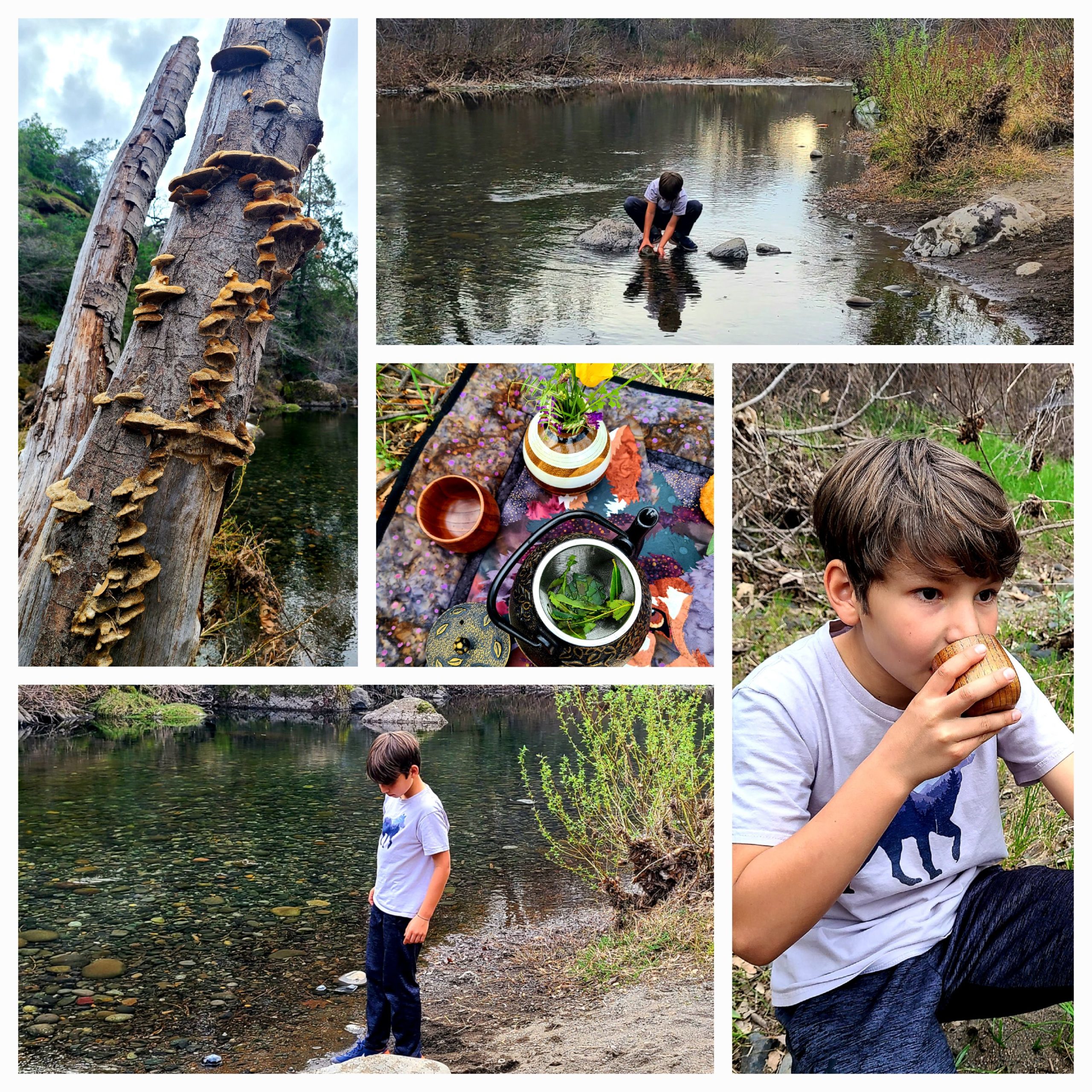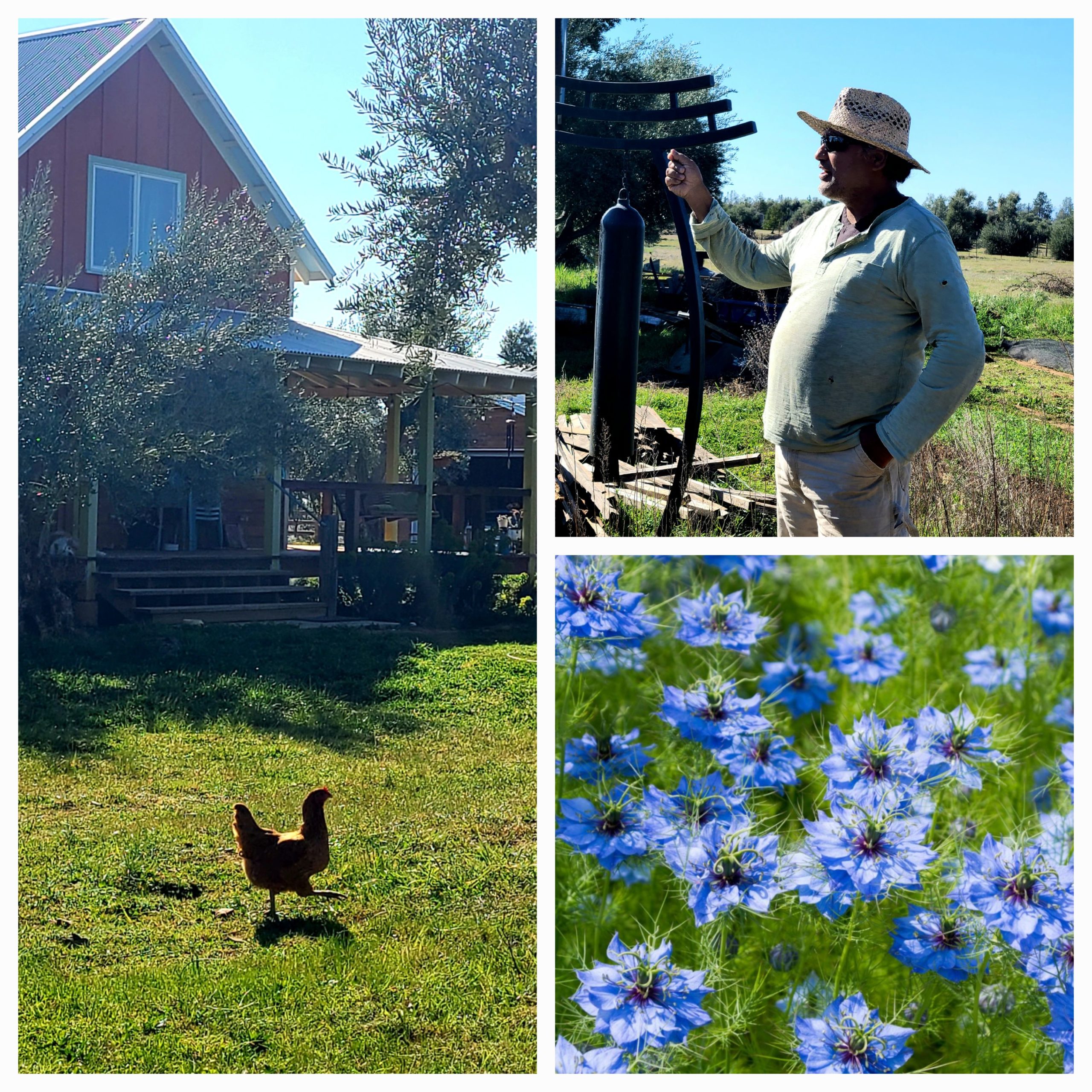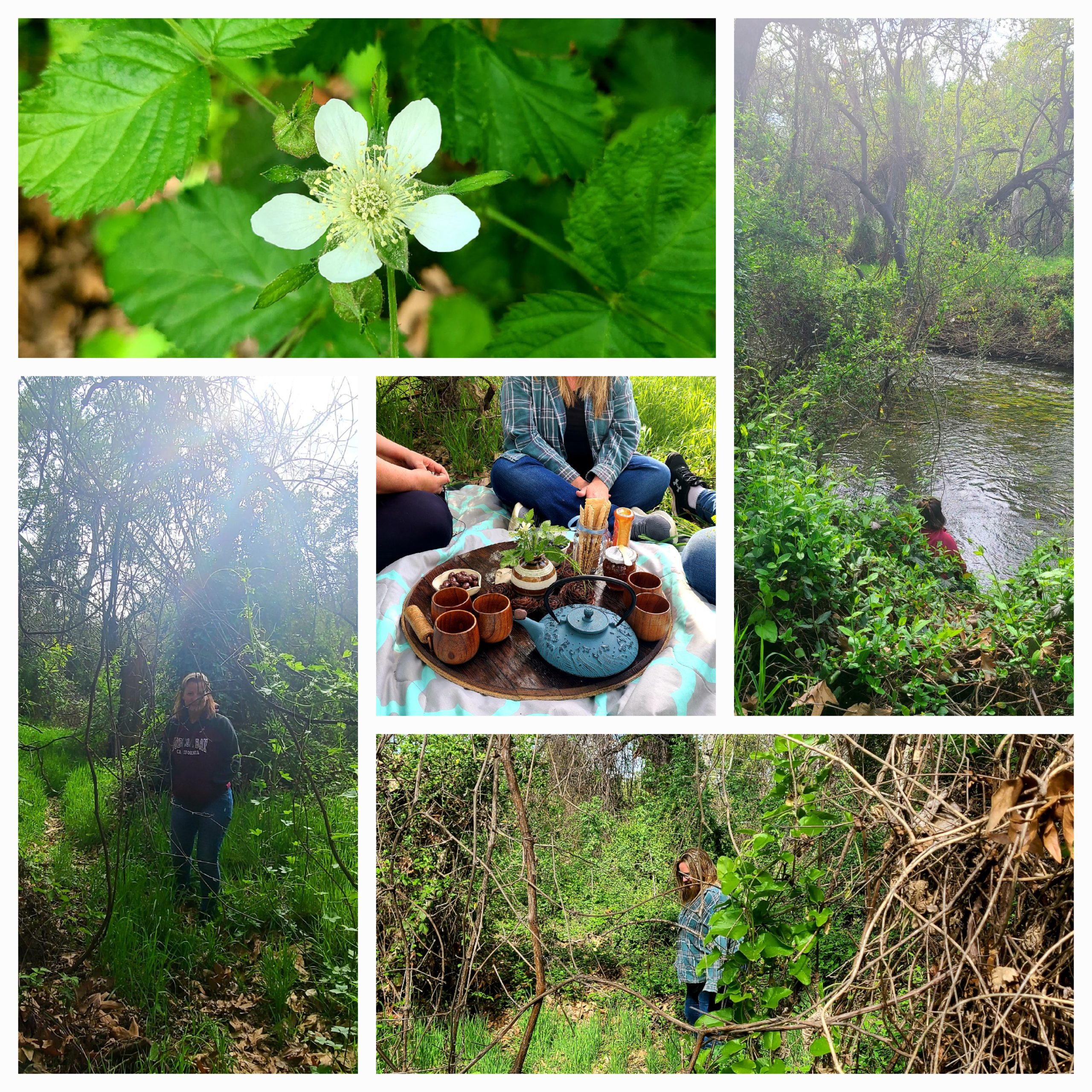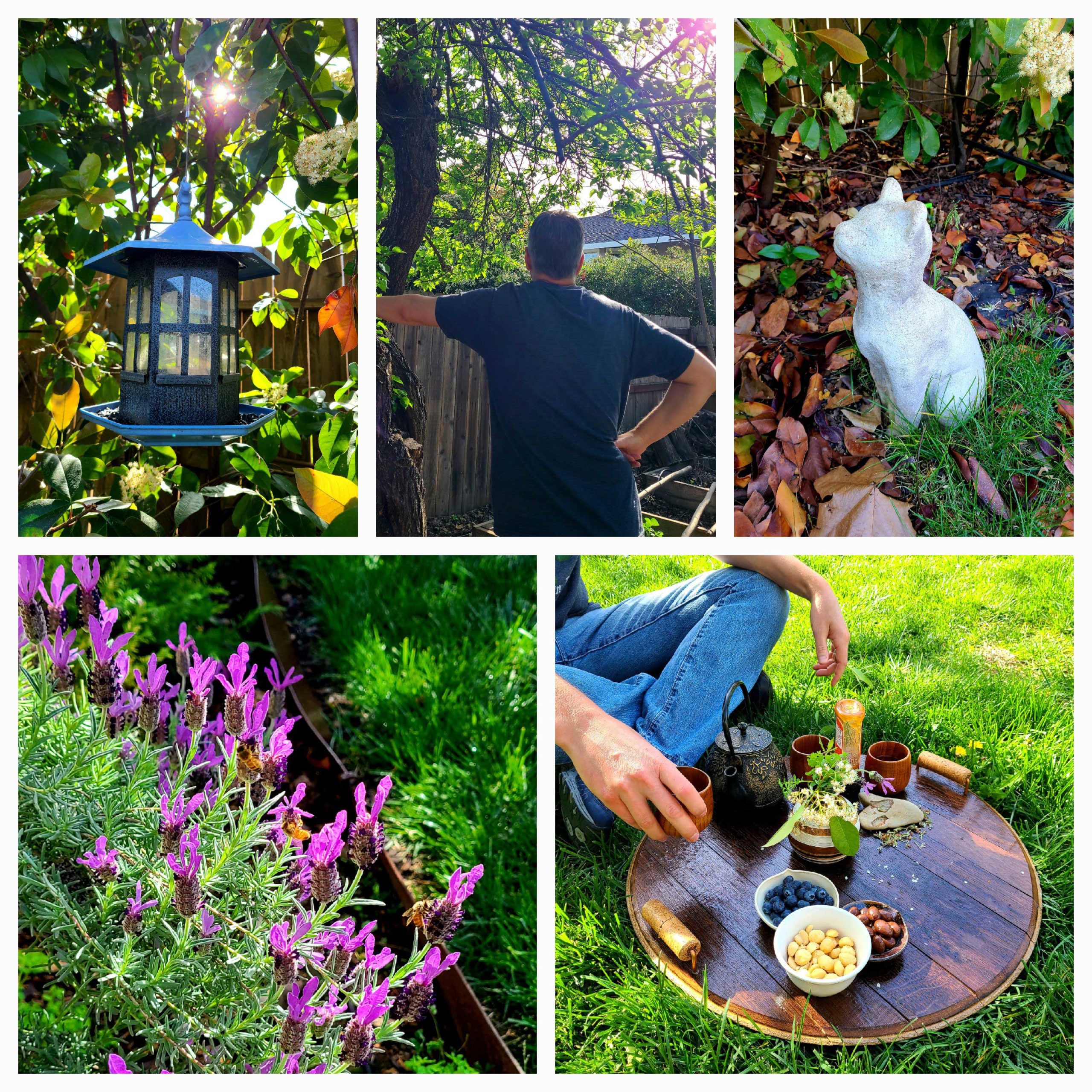SRWP explores new partnerships to improve watershed health
SRWP supports efforts to restore our relationship to land and water recognizing that a watershed is a complex social-ecological system and that humans are part of the system and not external to it. Disconnection from nature is considered one of the major problems facing conservation. We believe the more people know about and find joy in the natural wonders of the Sacramento River Watershed, the more they will want to work with us to protect them.
SRWP is one of a group of professionals passionate about eco-therapy and land-based interventions participating in a project to work together to facilitate the restorative effects of nature through forest therapy. The Forest Therapy for Community Recovery project is a collaborative effort with the Association of Forest and Nature Therapy (ANFT) to train 15 local mental health providers, outdoor educators, and other health and wellness service providers to become forest therapy guides and help individuals directly affected by the Camp Fire to recover from trauma and restore health and wellness. Upon completion of certification, the participants will have the tools and experience required to facilitate healing through guided forest therapy walks.
What is Forest Therapy?
Forest Therapy is a research-based framework for supporting healing and wellness through immersion in forests and other natural environments. There are many wonderful health benefits attributed to forest therapy, including significant mood improvement, boosted immune function, improved cardiovascular and respiratory health, attention restoration, and a reduction in stress and depression. In its simplest form, forest therapy is an opportunity to slow down and enjoy meaningful time in the forest.
The practice of forest therapy here in North America is shaped in large part by the ANFT. Inspired by the Japanese practice of Shinrin-yoku, the founders of the ANFT designed Forest therapy as a 3-hour experience where people could begin to not only achieve the health benefits associated with forest bathing, but also work on their relationships with themselves, each other, and the More-Than- Human World. Shinrin in Japanese means “forest,” and yoku means “bath.” So shinrin-yoku means bathing in the forest atmosphere, or taking in the forest through our senses. The practice emerged in Japan in the 1980s in an effort to offer a treatment for tech-boom burnout and to inspire residents to reconnect with and protect the country’s forests. The Japanese quickly embraced this form of ecotherapy and in the 1990s, researchers began studying the physiological benefits of forest bathing, providing the science to support what we innately know: that time spent immersed in nature is good for us.
Forest Therapy as a nexus to watershed health
There is increasing evidence of a positive relationship between a person’s connection to nature and their health and well-being. The practice of using nature to improve mental or physical health commonly referred to as ecotherapy is another valuable and often undervalued ecosystem service and benefit of a healthy watershed. Its loss can diminish our basic happiness.
In addition to providing health and wellness benefits, forest therapy has the potential to develop and deepen the relationship between people and nature that is critical for conservation. Research shows that people with a greater connection to nature are more likely to behave positively towards the environment. Forest therapy promotes healing for both humans and the more than human world and validates and advances the message that nature is good for us and that we can be good for nature.
